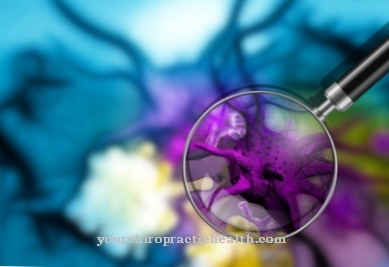Amrinone is a drug that has been used to treat severe heart failure that does not respond to other drugs. In Germany and in most other German-speaking countries, it is no longer offered due to the frequent side effects and has been replaced by more effective means.
What is amrinone?

From a chemical point of view, amrinone is an inhibitor that affects phosphodiesterase. In the body, it prevents the breakdown of cyclic adenosine monophosphate, which is a signal substance in the areas of metabolism and hormonal effects.
During the availability of the drug, it was mainly used as an acute remedy for heart failure, as it often leads to rapid lowering of blood pressure.
Pharmacological effect
Specifically, after amrinone is administered, the drug acts on two organs. The heart muscle is given an increased supply of calcium ions, so that the strength of the contractions of the heart muscle is increased.
In the medical sense, this is achieved by dispensing larger amounts of cyclic adenosine monophosphate. Amrinone also has an effect on the blood vessels. The aforementioned concentration of calcium ions decreases in the so-called smooth muscle cells of the blood vessels. This reduces the state of tension (tone) within the vessel walls, which in turn reduces blood pressure as a result of the drug.
The effects on the heart muscle and blood vessels together produce a clearly measurable and noticeable decrease in blood pressure in the patient's body. The effect of amrinone can, however, also have a negative effect, so that the contraindications of the preparation include severe cardiac arrhythmias, which must be treated separately with antiarrhythmics.
Severe renal insufficiency is also one of the contraindications, and pregnancy is not advisable during the administration of amrinone. Therefore, if the drug has to be taken for a long time, it should be replaced by another drug.
Medical application & use
Amrinone is given either as an injection or in tablet form, both variants having been widespread while the drug was available. The normal form of administration is offered in ampoules of 20 milliliters each.
Amrinone is used exclusively for the treatment of the heart failure mentioned, there are no other off-label applications. As a rule, it is a short-term drug that can have a rapid effect and, due to the frequent side effects, is only very rarely administered long-term. Simultaneous administration of dobutamine can increase the effect of the PDE-5 inhibitors. Various studies certify that the drug has an average effect, and the drug is not undisputed among doctors.
In a smaller study with 15 patients, two thirds of the test candidates showed no influence on the ability of the heart muscle to contract, although this should be one of the main areas of application for amrinone. None of the studies carried out reported any long-term benefits caused by amrinone. However, it is suitable as a drug that is administered to patients who do not respond to known drugs (such as digitalis or certain ACE inhibitors).
Another application is during a heart-lung transplant, but medicine has now found more effective drugs here too.
Risks & side effects
Amrinone can lead to various complaints in the gastrointestinal tract, including (mostly together) nausea and, as a result, vomiting.
Amrinone can also cause slight abdominal pain and irritation of the sense of taste. Rare side effects include fever and possible swelling of the spleen. The functioning of the liver can be disturbed. Amrinone also aims to decrease blood pressure, but at the same time an excessive decrease in blood pressure is an undesirable side effect of the drug.
The heart can also be affected by tachycardia and persistent ventricular fibrillation, in which case you must notify your doctor immediately. Myalgia, i.e. pain emanating from certain muscles, is also one of the very rare side effects of amrinone. The decrease in platelets in the blood has also been observed, but it can be reversed.



























